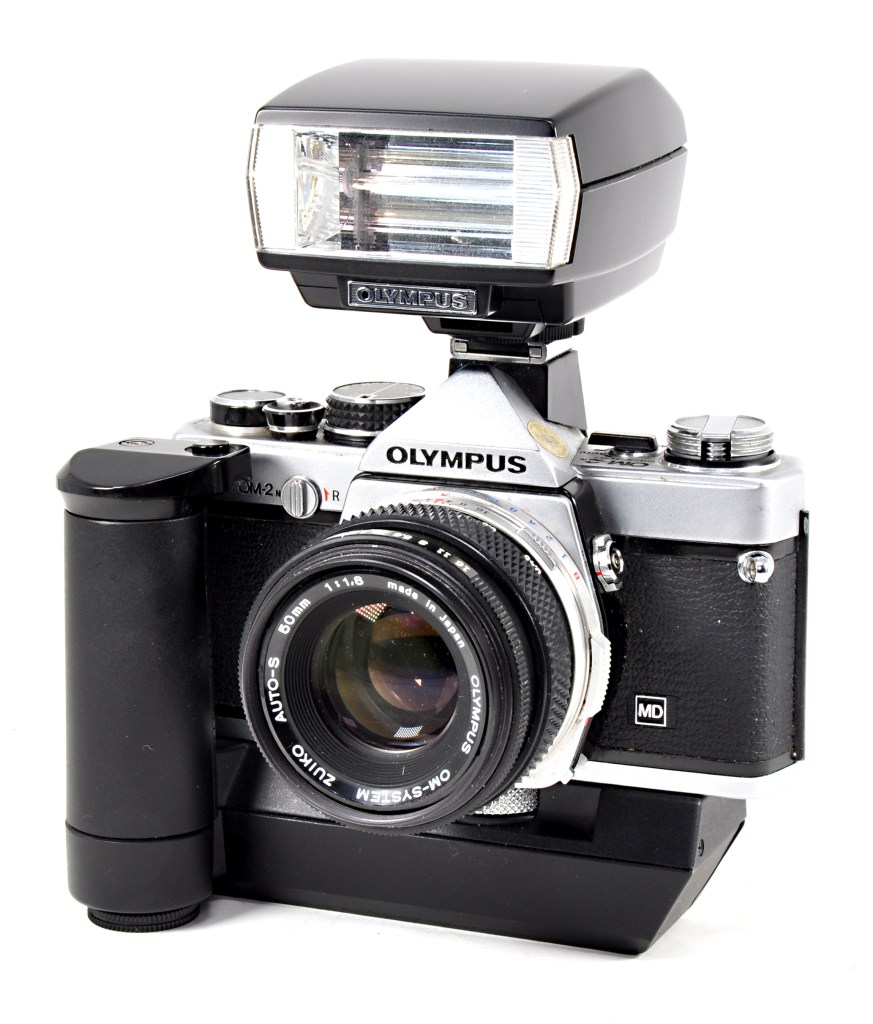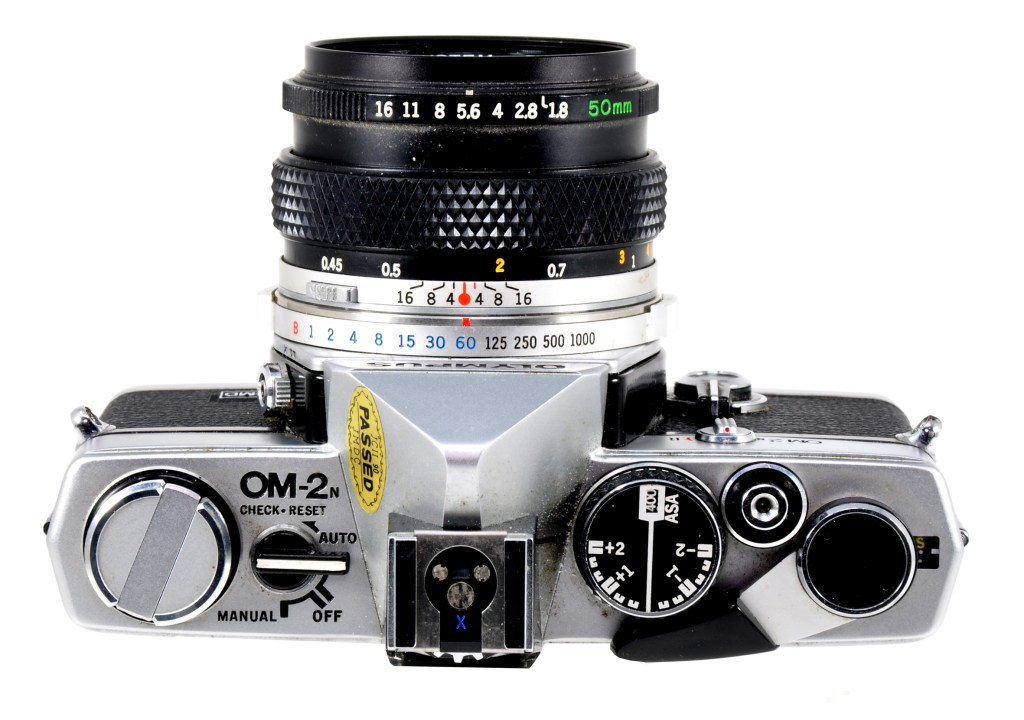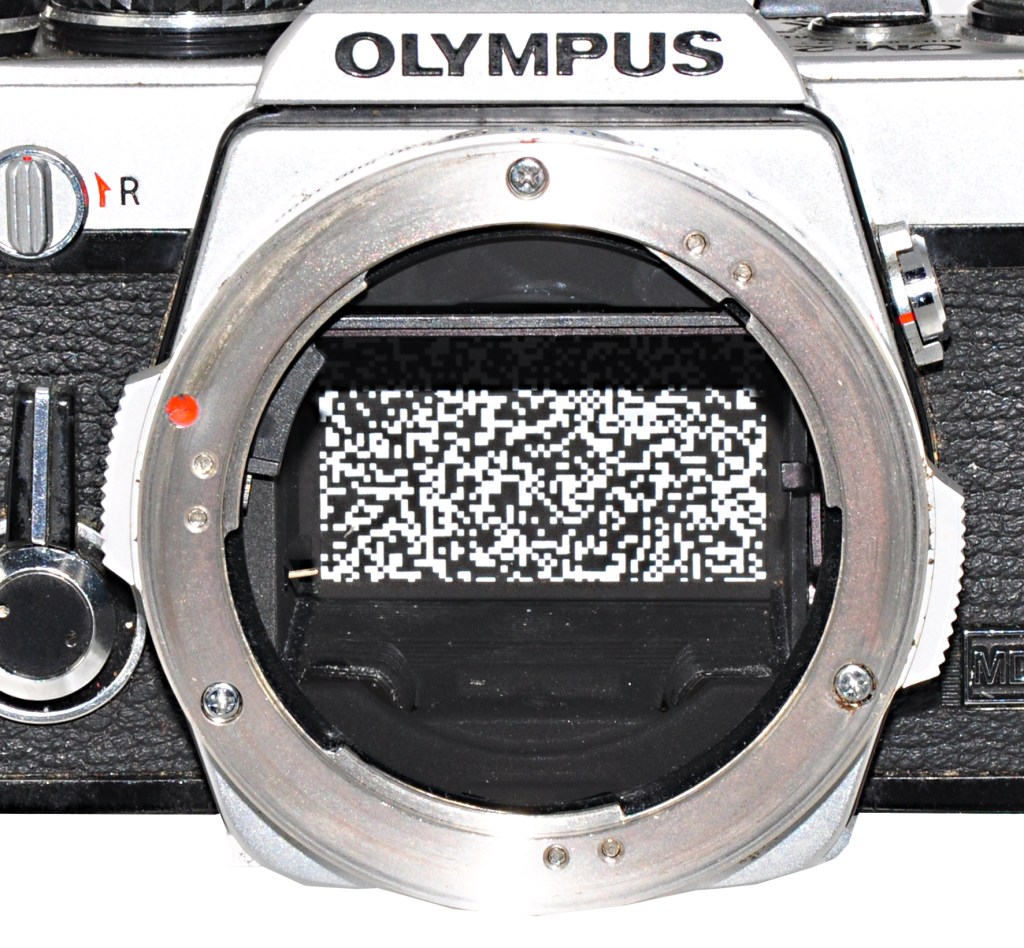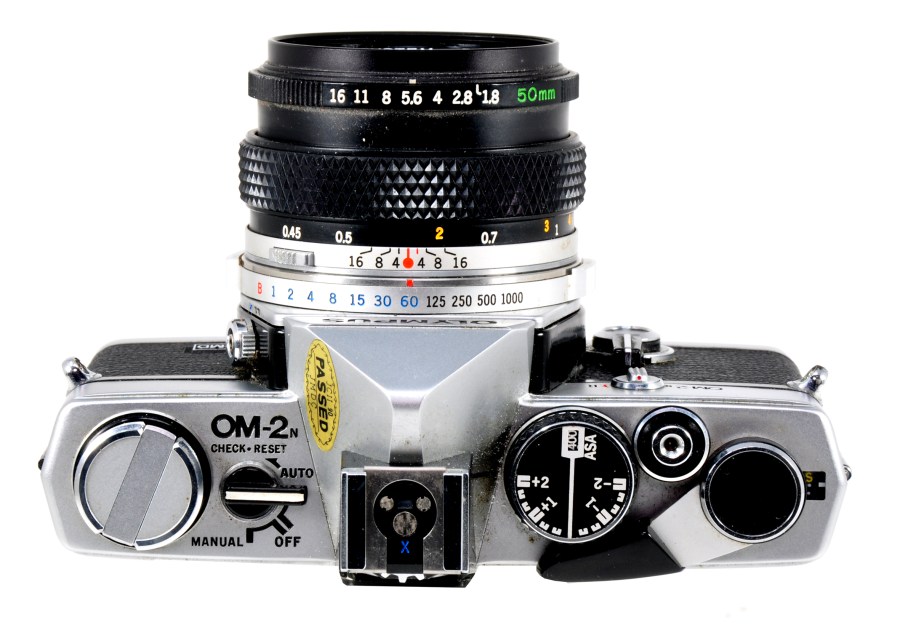In 1972, Olympus changed the face of 35mm single lens reflex (SLR) photography with the introduction of the OM-1 which, in the words of its advertising blurb, was ‘smaller, lighter, tougher, quieter, faster’ than most others. It soon became accepted as one of the greats. And then Olympus did it again. Three years later, the company launched the OM-2.
- Launched: 1975, Price at launch: approximately $240 / £180. Guide price now: $90-160 / £70-120

The OM-1 had been a manual mechanical camera with only match-needle metering. But the OM-2, despite being the same compact size as its predecessor, substituted an electronic shutter to allow manual operation and aperture priority with automatically chosen shutter speeds displayed in the viewfinder.

It was also the first camera with off-the-film metering.
The first shutter blind was imprinted with a pattern of black and white blocks similar to a modern-day QR code. For speeds of 1/60sec and above, light was reflected off this pattern to hit two silicon meter cells in the base of the body. For speeds slower than 1/60sec, light was reflected off the film as the first shutter blind opened, controlling when the second blind would be closed. It meant the shutter speed was measured and set during the actual exposure.

Flash photography got a makeover too.
With its T20 dedicated flashgun slipped into the hot shoe, the same off-the-film metering system measured flash output through the lens, took into account ambient light and cut the flash at precisely the right moment. Accessories for the OM-2 included a power wind, motor drive, 250-exposure film back, close-up gear and lenses from 8mm fisheye to 1,000mm super-telephoto. In 1979, the OM-2 was slightly upgraded as the OM-2N, extending the auto shutter speeds to 120 seconds and adding a reset button to release the mirror if it locked up due to battery failure. That was about as good as it got back then, and it’s still a pretty good buy for today’s film fans as well.
What’s good
- Super-accurate shutter speed automation, extra-large bright viewfinder.
What’s bad
- Reliant on two 1.5-volt silver oxide batteries with no mechanical back-up.
Related reading







